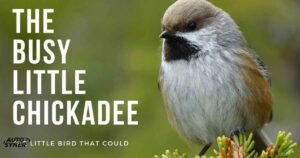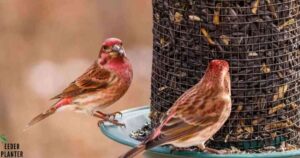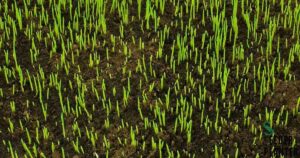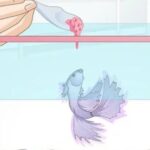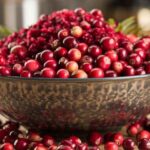Are you struggling to attract a diverse array of feathered friends to your backyard? Many bird enthusiasts face this challenge, watching in frustration as their feeders remain untouched. The secret to transforming your yard into a bustling bird haven might be simpler than you think.
Enter nyjer seed – a tiny powerhouse that’s revolutionizing backyard birding.Imagine your garden alive with the vibrant colors of goldfinches, the cheerful chirps of siskins, and the graceful movements of finches.
This isn’t just a dream; it’s the reality for those who’ve discovered the magic of nyjer seed. In this comprehensive guide, we’ll explore everything you need to know about what birds eat nyjer seed? why it’s so effective, and how you can use it to create a thriving bird sanctuary right outside your window.
What is Nyjer Seed?
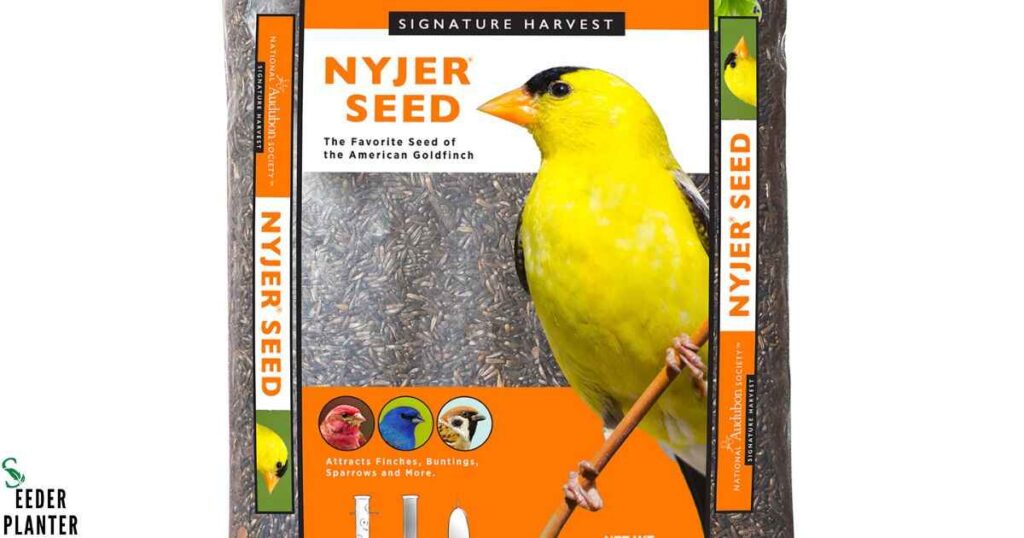
Nyjer seed, scientifically known as Guizotia abyssinica, originates from Ethiopia. Despite its nickname “thistle seed,” it’s not related to thistle at all. These tiny, black seeds are rich in oil, making them an excellent energy-rich bird food. Their small size and high nutritional content make them particularly appealing to smaller birds with specialized beaks.
The seeds are typically heat-treated before being sold to prevent germination, ensuring they won’t sprout in your garden. This process doesn’t affect the seed’s nutritional value, maintaining its status as a premium food source for birds. The high oil content bird seed provides essential fats and proteins, crucial for birds’ energy needs, especially during colder months or migration periods.
The Difference Between Nyjer Seed and Thistle Seed
Many birders use the terms nyjer and thistle seed interchangeably, but they’re distinctly different. Nyjer seed comes from the African yellow daisy plant, while thistle seed is from various thistle species. The confusion often arises because both are favored by similar bird species, particularly finches.
Nyjer seeds are smaller and darker than most thistle seeds. They require special feeders due to their size, unlike thistle seeds which can be used in a variety of feeder types. While both seeds are nutritious, nyjer seed typically has a higher oil content, making it more calorie-dense and appealing to birds needing quick energy boosts.
Birds That Eat Nyjer Seed
Understanding what birds eat nyjer seed? is key to maximizing the effectiveness of your bird feeding efforts. This knowledge allows you to tailor your feeding strategy to attract specific species and create a diverse avian population in your backyard.
The primary consumers of nyjer seed are small birds with specialized beaks designed for cracking open tiny seeds. These birds are often colorful and active, making them delightful additions to any garden. Let’s explore the main types of birds that are drawn to nyjer seed and why they find it so irresistible.
Finches: The Primary Nyjer Seed Eaters
Finches, particularly goldfinches, are the poster children for nyjer seed consumption. Their slender beaks are perfectly adapted for nyjer seed shell cracking. The American Goldfinch diet heavily relies on these seeds, especially during winter months when natural food sources are scarce.
House Finches and Purple Finches also frequent nyjer feeders. These birds are known for their beautiful plumage and melodious songs, making them welcome visitors to any backyard. Their preference for nyjer seed makes it an excellent choice for those looking to attract these specific species.
Other Small Birds Attracted to Nyjer Seed
While finches are the primary consumers, they’re not the only birds that enjoy nyjer seed. Pine siskins diet often includes these tiny seeds, especially during their winter migrations. Redpolls, another northern species, also relish nyjer seeds during their southern winter visits.
Surprisingly, some larger birds like doves and quail have been known to eat nyjer seed when it’s offered on platform feeders. This diversity in bird species highlights the versatility of nyjer seed as a bird food option, capable of attracting a wide range of feathered friends to your yard.
Seasonal Variations in Nyjer Seed Consumption
Bird feeding patterns change with the seasons, and nyjer seed consumption is no exception. During spring and summer, many birds supplement their diets with insects and natural seeds. However, as autumn approaches and natural food sources dwindle, nyjer seed becomes increasingly popular.
Winter is often the peak season for nyjer seed consumption. Many birds, especially finches, rely heavily on these energy-rich seeds to survive the cold months. Understanding these seasonal patterns can help you adjust your feeding strategy throughout the year, ensuring a constant stream of avian visitors.
Benefits of Feeding Nyjer Seed to Birds
Offering nyjer seed in your backyard isn’t just about attracting birds; it’s about providing them with a high-quality food source that supports their health and well-being. The nyjer seed benefits extend beyond just feeding birds; they contribute to creating a thriving ecosystem in your backyard.
By understanding the nutritional value and attraction power of nyjer seed, you can make informed decisions about your bird feeding strategy. This knowledge allows you to not only enjoy a diverse range of bird species but also contribute to their survival and conservation.
Nutritional Value of Nyjer Seed for Birds

Nyjer seed is a nutritional powerhouse for birds. It’s high in fat and protein, providing essential energy for daily activities and long migrations. The oil content in nyjer seed is particularly valuable, offering a concentrated source of calories that birds can quickly metabolize.
This seed’s nutritional profile makes it especially important during winter months when birds need extra energy to maintain their body temperature. For species like goldfinches, which molt twice a year, nyjer seed provides the necessary nutrients to support feather growth and overall health.
Attracting a Diverse Bird Population
One of the most exciting aspects of offering nyjer seed is the variety of birds it can attract. While finches are the primary visitors, you might be surprised by the range of species that show up at your nyjer feeder. This diversity can turn your backyard into a vibrant hub of avian activity.
Birdwatchers often use nyjer seed as a strategic tool to attract specific species they want to observe. The presence of these birds can also contribute to local biodiversity, supporting a healthy ecosystem in your area. By providing nyjer seed, you’re not just feeding birds; you’re creating a miniature wildlife sanctuary.
Best Practices for Serving Nyjer Seed
To make the most of nyjer seed’s bird-attracting potential, it’s crucial to understand the best practices for serving it. Proper feeder selection, placement, and maintenance can significantly enhance your bird feeding experience and ensure that your feathered visitors keep coming back.
By following these guidelines, you’ll create an inviting and safe environment for birds to enjoy nyjer seed. This attention to detail not only benefits the birds but also maximizes your enjoyment as a birdwatcher and caretaker of your backyard ecosystem.
Types of Feeders for Nyjer Seed
Choosing the right feeder is crucial when offering nyjer seed. Due to its small size, nyjer seed requires specialized feeders to prevent waste and ensure easy access for birds. The most popular options include:
- Mesh sock feeders: These flexible, tube-shaped feeders allow birds to cling and feed from multiple angles.
- Finch tube feeder: Similar to traditional tube feeders but with smaller ports to prevent seed spillage.
- Platform feeders with fine mesh: These accommodate ground-feeding birds while containing the tiny seeds.
Each feeder type has its advantages, and using a combination can attract a wider variety of birds. Remember, the key is to choose feeders that keep the seed dry and accessible to small birds.
Proper Placement of Nyjer Seed Feeders
The location of your nyjer seed feeder can significantly impact its effectiveness in attracting birds. Here are some tips for optimal placement:
- Place feeders near natural shelter like trees or shrubs, providing quick escape routes from predators.
- Ensure feeders are visible from your viewing area but not too close to windows to prevent bird collisions.
- Consider hanging multiple feeders to reduce competition among birds.
- Keep feeders away from areas with high human or pet traffic to create a peaceful feeding environment.
Proper placement not only attracts more birds but also ensures their safety while feeding. Experiment with different locations to find what works best in your specific backyard setting.
Maintaining Fresh Nyjer Seed
Nyjer seed freshness is crucial for attracting birds and ensuring their health. Unlike some other seeds, nyjer can spoil relatively quickly, especially in humid conditions. Here are some tips for maintaining fresh seed:
- Check the seed regularly for signs of mold or clumping.
- Replace uneaten seed every 3-4 weeks, or sooner if it appears damp or moldy.
- Store unused seed in a cool, dry place in an airtight container.
- Clean feeders regularly to prevent the buildup of old seed and bird droppings.
Remember, birds can detect rancid seed and will avoid feeders with spoiled food. Keeping your nyjer seed fresh ensures that your feeders remain attractive to birds year-round.
Combining Nyjer Seed with Other Bird Foods
While nyjer seed is a powerful attractant on its own, combining it with other types of bird food can create a diverse and appealing buffet for a wide range of bird species. This strategy can transform your backyard into a bustling avian hotspot, drawing in birds with various dietary preferences.
By offering a variety of foods, you’re not only catering to different bird species but also providing a more balanced diet for your feathered visitors. This approach can lead to a more dynamic and interesting birdwatching experience right in your own backyard.
Creating a Balanced Bird Feeding Station
A well-rounded bird feeding station should offer a variety of foods to attract different species. While nyjer seed is excellent for finches and small birds, incorporating other seeds and foods can broaden your visitor base. Consider adding:
- Black oil sunflower seeds for larger songbirds
- Safflower seeds for cardinals and grosbeaks
- Suet cakes for woodpeckers and nuthatches
- Mealworms for bluebirds and warblers
By offering this variety, you’re creating a one-stop feeding ground that caters to a diverse bird population. This not only enhances your birdwatching experience but also supports the nutritional needs of various bird species in your area.
Nyjer Seed in Commercial Bird Seed Mixes
Many commercial wild bird seed mix products include nyjer seed as a key ingredient. These mixes are designed to attract a wide range of birds while providing a balanced diet. When choosing a pre-mixed bird seed, look for:
- High-quality mixes with a good proportion of nyjer seed
- Blends that include other small seeds like millet for variety
- Mixes without fillers like cracked corn, which many small birds won’t eat
Valley Farms bird food is an example of a brand that offers quality seed mixes including nyjer. Remember, while mixes are convenient, some birds prefer to feed on pure nyjer seed, so offering both options can maximize your bird-attracting potential.
Nyjer Seed and Garden Ecology
Incorporating nyjer seed into your bird feeding routine isn’t just about attracting birds; it’s about contributing to the broader ecology of your garden. The relationship between nyjer seed, the birds it attracts, and your garden’s ecosystem is a fascinating and complex one.
Understanding this relationship can help you create a more sustainable and wildlife-friendly environment. It’s about striking a balance between providing for birds and maintaining the natural integrity of your garden space.
Impact of Nyjer Seed on Local Ecosystems
One of the primary concerns when introducing any new food source to an ecosystem is its potential impact. Fortunately, nyjer seed is considered environmentally friendly for several reasons:
- It’s typically sterilized, preventing it from sprouting and becoming invasive.
- It attracts native bird species, supporting local biodiversity.
- Birds that feed on nyjer seed often help control insect populations.
However, it’s important to practice responsible feeding. Avoid overfeeding, which can lead to dependency, and maintain clean feeding areas to prevent the spread of diseases among bird populations.
Combining Nyjer Feeders with Native Plants
To create a truly bird-friendly garden, consider pairing your nyjer feeders with native plants that naturally attract birds. This approach provides a more holistic environment for birds, offering both food and habitat. Some complementary plants include:
- Coneflowers and sunflowers for seed-eating birds
- Berry-producing shrubs like elderberry or serviceberry
- Native grasses that provide both seeds and nesting material
By combining feeders with natural food sources, you’re creating a sustainable environment that supports birds year-round. This approach not only attracts more birds but also contributes to the overall health of your local ecosystem.
Read This Blog: Can Birds Eat Popcorn? A Comprehensive Guide for Bird Enthusiasts
Troubleshooting Nyjer Seed Feeding Issues
Even with the best intentions, you might encounter some challenges when feeding birds nyjer seed. Understanding common issues and how to address them can help you maintain a successful and enjoyable bird feeding experience.
By being proactive and attentive to potential problems, you can ensure that your nyjer seed feeding efforts remain effective and continue to attract a diverse array of birds to your backyard.
Why Birds Might Not Be Eating Your Nyjer Seed
If you notice that birds aren’t flocking to your nyjer feeder as expected, there could be several reasons:
- Seed quality: Old or rancid seed is unappealing to birds. Check the nyjer seed freshness.
- Feeder issues: Clogged ports or dirty feeders can deter birds. Regular bird feeder maintenance is crucial.
- Placement: Birds may avoid feeders in open or busy areas. Try different locations.
- Seasonal changes: Bird feeding patterns vary throughout the year. Be patient during seasonal transitions.
Remember, it can take time for birds to discover a new food source. If you’ve addressed these issues and still don’t see results, consider consulting local birding groups for region-specific advice.
Dealing with Unwanted Guests at Nyjer Feeders
While nyjer seed is primarily attractive to small birds, you might occasionally face competition from larger birds or even squirrels. Here are some strategies to manage these unwanted guests:
- Use feeders with small perches that only accommodate small birds.
- Install squirrel baffles above and below hanging feeders.
- Place feeders away from structures that larger animals can use to access them.
- Consider offering alternative food sources for larger birds and squirrels in a different area of your yard.
By implementing these strategies, you can ensure that your nyjer seed remains available primarily to the small birds it’s intended for, maximizing its effectiveness in attracting finches and other desirable species.
Nyjer Seed: Economic and Environmental Considerations
When incorporating nyjer seed into your bird feeding routine, it’s important to consider both the economic and environmental aspects. Understanding where nyjer seed comes from, how it’s produced, and its cost-effectiveness can help you make informed decisions about your bird feeding practices.
By considering these factors, you can ensure that your bird feeding hobby is not only enjoyable but also sustainable and responsible. This holistic approach contributes to both the well-being of birds and the broader environmental context.
Also Read This Blog: Watering New Grass Seed: The Complete Guide to Perfect Germination (2024 Updated)
The Nyjer Seed Industry
The nyjer seed industry has grown significantly with the increasing popularity of backyard bird feeding. Most nyjer seed is imported from countries like Ethiopia and India. The production process includes:
- Cultivation of the Guizotia abyssinica plant
- Harvesting and processing of the seeds
- Heat treatment to prevent germination
- Packaging and distribution to retailers
The industry provides economic opportunities in developing countries while supplying a valuable product for bird enthusiasts. However, it’s important to consider the environmental impact of long-distance transportation when choosing bird food options.
Cost-Effectiveness of Nyjer Seed in Bird Feeding
While nyjer seed is often more expensive than other bird seeds, many enthusiasts find it cost-effective due to its high attractiveness to desirable bird species. Consider these factors when evaluating the value of nyjer seed:
- Attraction power: Nyjer draws specific, often colorful birds that might not visit other feeders.
- Waste reduction: Proper feeders minimize spillage, making nyjer a bird seed no waste option.
- Nutritional value: The high oil content provides excellent nutrition, potentially reducing the overall quantity of seed needed.
To maximize cost-effectiveness, combine nyjer seed with other types of bird food and use appropriate feeders to minimize waste. This balanced approach can provide the best value while attracting a diverse range of birds to your yard.
Advanced Tips for Nyjer Seed Enthusiasts
For those who have mastered the basics of nyjer seed feeding, there are advanced techniques and activities that can enhance your bird watching experience. These tips can help you take your hobby to the
Frequently Asked Question
Why won’t the birds eat the nyjer seed?
Birds may avoid nyjer seed if it’s stale, rancid, or moldy. Check the seed’s freshness and ensure your feeders are clean. Sometimes, birds need time to discover new food sources. Placement of feeders and seasonal changes can also affect bird feeding patterns.
What bird seed attracts the most birds?
While nyjer seed is excellent for finches, a mix of seeds attracts the most diverse bird population. Black oil sunflower seeds, safflower, and millet, combined with nyjer, can attract a wide variety of species to your yard.
How to feed nyjer seed?
Use specialized feeders like mesh socks or tube feeders with small ports. Place feeders near natural shelters and keep the seed fresh. Combine with other seeds for a diverse feeding station.
Is there a difference between nyjer and thistle seed?
Yes, nyjer and thistle seeds are different. Nyjer comes from the African yellow daisy plant, while thistle seed comes from various thistle species. Nyjer is smaller and has a higher oil content than most thistle seeds.
How to tell if nyjer seed is bad?
Check for signs of mold, clumping, or a rancid smell. Fresh nyjer seed should be black and loose. If the seed feels damp or looks discolored, it’s likely gone bad and should be replaced.
Who eats Niger seeds?
Primarily small birds with specialized beaks eat nyjer seeds. This includes finches (like American Goldfinches, House Finches, and Purple Finches), pine siskins, and redpolls. Some larger birds like doves may also eat nyjer when it’s offered on platform feeders.
Conclusion
As we wrap up our exploration of what birds eat nyjer seed? it’s clear that this tiny black seed holds immense power in the world of backyard birding. From the vibrant goldfinches to the charming siskins, nyjer seed has proven its worth as a magnet for some of nature’s most delightful avian visitors.
But remember, successful bird feeding is an art as much as it is a science. It requires patience, observation, and a willingness to adapt. So, as you embark on your nyjer seed adventure, keep your eyes open, your feeders full, and your spirit of discovery alive.
Who knows? The next flutter of wings at your feeder might just be the start of a beautiful birding journey. Happy feeding!

I am Alexander James, a seasoned professional with 4 years of expertise, brings passion and skill to every project. Elevate your experience with my knowledge and creativity.
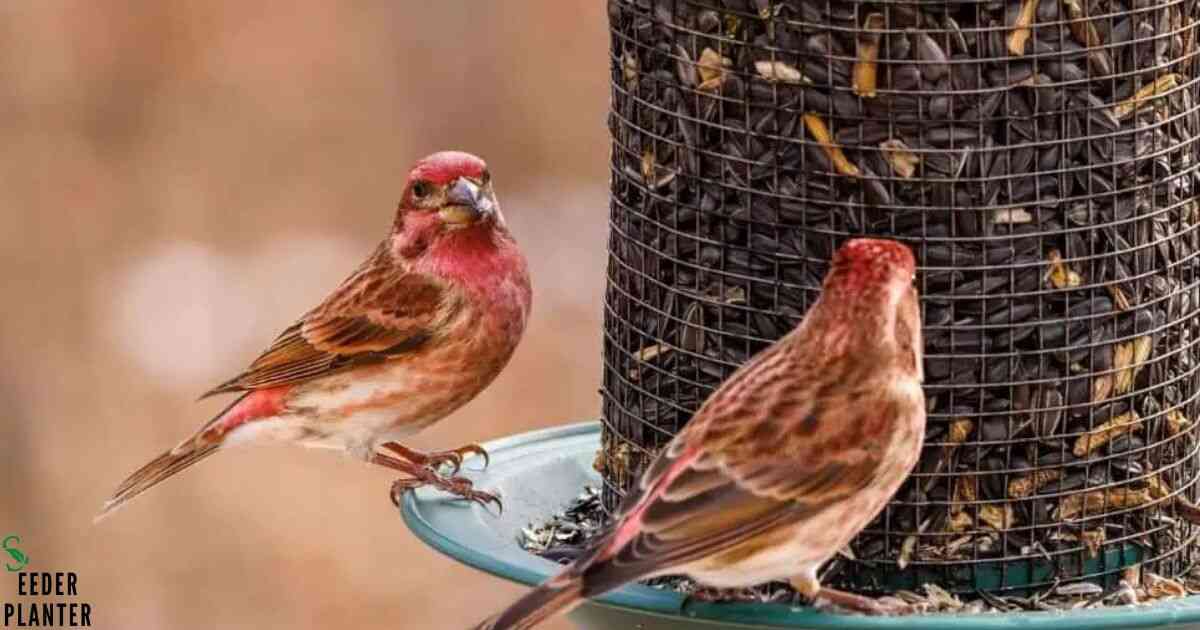

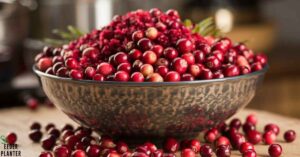
![Hollyhock Seeds: The Complete Guide to Success [2024]](https://seederabout.com/wp-content/uploads/2024/10/Hollyhock-Seeds-The-Complete-Guide-to-Success-2024-300x157.jpg)
